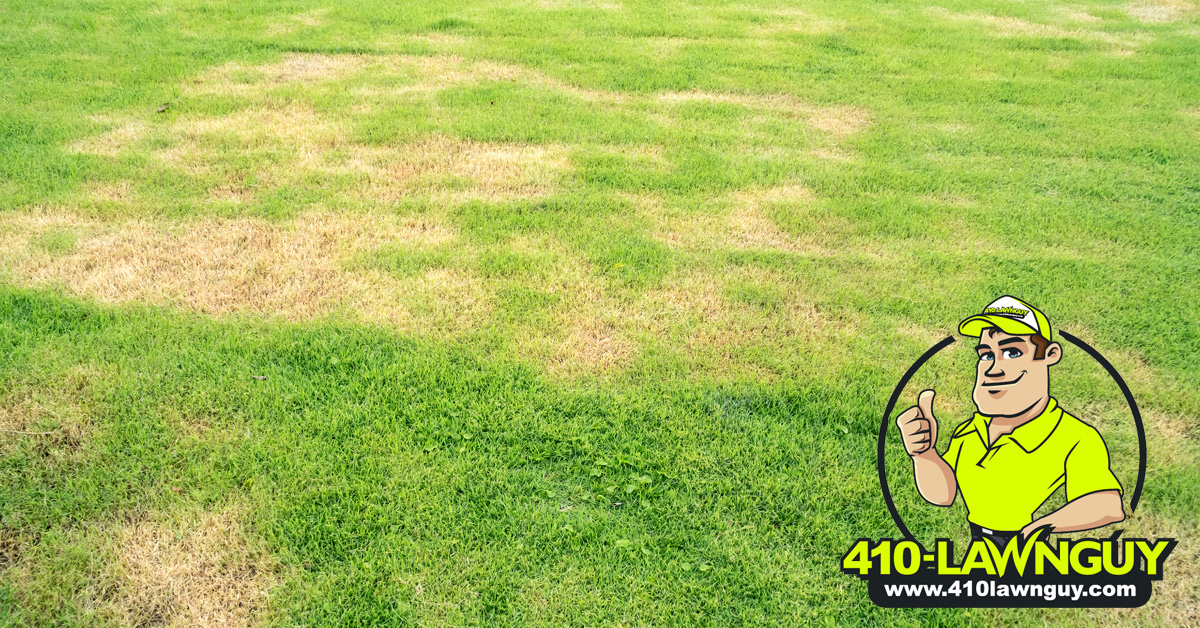 Meticulously taking care of our grass to achieve a perfectly lush, emerald-green lawn is somewhat of an American tradition.
Meticulously taking care of our grass to achieve a perfectly lush, emerald-green lawn is somewhat of an American tradition.
We diligently water, fertilize, weed, mow, and lovingly tend to their every need, even in the scorching hot heat of summer. And it’s all to achieve gorgeous curb appeal (and the envy of all our neighbors, if we’re sincere).
But what happens when you end up with stubborn dead patches that no amount of watering seems to fix?
In this article, we’ll explore what you need to do to care for and eradicate your dead patches.
1) Take a look at your mowing and watering schedule
Our first tip will take you all the way back to the basics of lawn care: how often and how much you’re watering your lawn, and how often and how short you’re mowing it.
Underwatered grass will act like any other living thing in the absence of water: it’ll become dangerously dry, shrivel up, and if you don’t proactively water it, it’ll die. This is the case even if you have automatic sprinklers or a robust watering routine. Any patches that aren’t adequately watered can and will leave an unsightly dead patch.
Overwatering your grass, on the other hand, can actually drown it. Over time, the oxygen particles around the roots will be displaced by water, leaving the grass unable to breathe.
While a necessary lawn care step, mowing your grass puts a lot of stress on your grass. The more often you cut and the shorter you set the mower blade, the more distressed your lawn will feel, which can cause dead patches.
The fix for either of these issues is simple: determine what you’re doing incorrectly, and do the opposite until you find an amount of water or mowing level that works for your lawn. Consistency is key!
2) Apply the correct amount of lawn care products
Even though grass loves fertilizer and weed-be-gone, these products can burn your grass. Chemical burns occur when you apply the material improperly to your lawn, either using too much or not spreading it evenly. When the product builds up, it will draw moisture from the dirt, which causes an ultra-concentrated amount to break down directly onto the grass. This concentrated amount doesn’t penetrate properly and leaves unsightly dead patches where the grass becomes too burned to recover.
To make sure your lawn doesn’t suffer from chemical burns, always read the manufacturer’s directions for application. By following these mandates, you can avoid damaging your lawn.
3) Repair dead patches carefully and correctly
Once you’ve determined why your grass is dying and taken the proper steps to mitigate any further damage, you might still have spots of grass that are irreparably damaged. At that point, grass replacement would be your best option to restore your green lawn.
Our recommendation for the easiest and most cost-effective repair is aeration and overseeding.
Aeration and overseeding involve several steps. First, rake out any old grass to leave bare dirt, and loosen the earth to introduce oxygen and allow roots to grow. Then, lay a hearty layer of seed on the bare patch and water it. Protect this area from pets and people so the seeds can grow. This is not an overnight process, and you might not notice a difference until the next growing season.
Keep in mind that the best time to seed your lawn is NOT in the spring and summer, like you might expect, but late summer into fall. This provides the perfect conditions for growing; the cool evenings keep water from evaporating and leave your dirt moist while the warm sun encourages growth.
Another option to repair dead patches is to lay sod. Sod is healthy grass that is cut under the root and transported in rolls to be placed directly on the ground. You’ll still need to follow the same patch-clearing routine, aerate, and water the patch before laying sod, but with any luck, the sod will grow where you apply it.
However, sod can be quite expensive, might not take to your lawn, and ultimately die or look unhealthy. And, it can usually always been seen among the rest of your yard if it is not blended correctly.
4) If all else fails, ask a professional
If your watering, mowing, and chemical spreading routines are all on-point. Suppose you’ve tried repairing your dead grass patches to no avail. In that case, it may be time to consult with a professional lawn care company to discuss your options.
You might have a pest problem, contaminants in your water, environmental stressors, or another issue that can only be diagnosed by a professional. Catching these issues before they spread to your healthy grass is imperative to keeping your lawn green and healthy.
By choosing the correct professional, you’ll be able to confidently take concrete steps to affect the health of your lawn. The experts at 410 Lawn Guy pride ourselves on our ability to keep our valued customers’ lawns healthy and green. We understand the science behind healthy grass.
You want to enjoy the thick, healthy green lawn of your dreams without the headache. We want to help.
For excellent lawn care service in the Anne Arundel, Baltimore, or Prince George’s county areas in Maryland, give 410 Lawn Guy a call. You’ll be glad you did!

